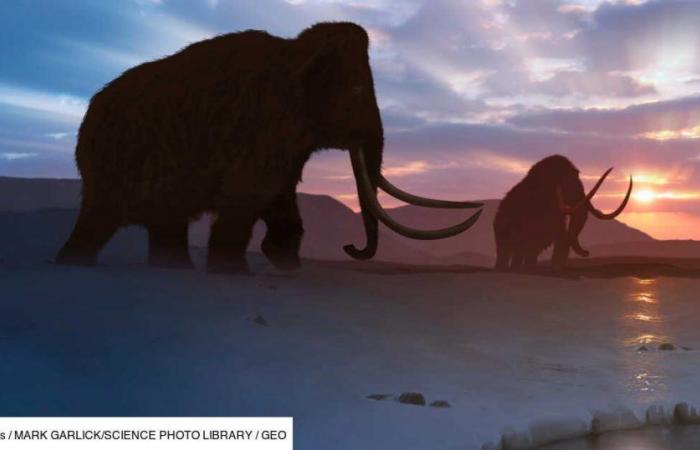When we imagine woolly mammoths (The original mammoth), these immense creatures having lived in the steppes of Eurasia and North America during the Pleistocene, it is difficult to imagine that a simple allergy could have harmed them.
However, this is what the conclusions of a study published on August 27, 2024 in the journal Earth History and Biodiversity suggest. We learn that the rapid growth of vegetation at the margins of the last ice age could be linked to the explosion of pollen, which would have strongly altered the sense of smell of members of this extinct species of the Elephantidae family. Researchers believe that this situation could have led to the extinction of these animals.
Several vital functions would have been hampered by these allergies
The scientists who published the results of their observations in Earth History and Biodiversity explain that the explosion of vegetation, attributed to climate change, would have released such quantities of pollen that allergic reactions would have appeared in these animals. The creatures’ sense of smell having been blocked, they would no longer be able to communicate normally with each other.
“Mammoths, giants in the Eure valley”, an exhibition to discover at Chart1
Concretely, the inability of woolly mammoths to find their way in space during the breeding season would have prevented them from finding sexual partners. These allergies, by disrupting several vital functions of mammoths, would also have prevented them from finding food, orienting themselves correctly during migration or even escaping predators. A situation which, as we can easily guess, would have gradually led to a dizzying drop in the size of the population… until its extinction.
In order to confirm or refute their thesis, the researchers propose examining mammoth carcasses to detect possible plants and pollen in the stomach. Secondly, in order to understand whether these products could have triggered an allergic reaction, they suggest looking for immune system proteins produced by the body during an allergic reaction.
They believe that studying the fossilized droppings could help determine whether or not these animals suffered from severe cases of hay fever. Until now, no published research in this area has addressed it, they deplore.
A thesis that is not unanimous
Woolly mammoths, which roamed the Earth between 2.6 million and 11,700 years ago, went extinct en masse around 10,000 years ago, although a small population survived on Wrangel Island, located to the north. -east of present-day Russia, until 4,000 years ago.
Experts consider that their extinction is due to several factors: inbreeding, human intervention through hunting and… major changes in vegetation. To what extent did each of these factors contribute to the disappearance of these mammoths? This is a question that continues to be debated among the scientific community.
Some specialists, such as evolutionary biologist Vincent Lynch, are not convinced that allergies played a significant role in their disappearance. “This idea seems quite far-fetched and I don’t really see what evidence we could provide [pour la valider]“estimates the associate professor at the University of Buffalo (United States) in a Live Science publication dated Wednesday, September 25.
To support his reasoning, he points out that ancient DNA samples suggest that the last woolly mammoths had lost the ability to smell certain plants. While waiting for further research to be carried out, Vincent Lynch nevertheless says he is convinced that the disappearance of these creatures is attributed to a combination of environmental and human factors.






